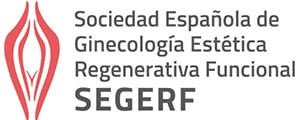Objectives: Our objective is clinical evaluation of the vulvovaginal dryness treatment by a new non-crosslinked HA device, containing oligopeptides and antioxidants.
Introduction: Vaginal dryness is the most reported complaint by patients affected by the “Genitourinary Syndrome of Menopause – GSM”. This syndrome affects, in Western Countries, approximately the 80% of women in peri- or post-menopause; however, it results underdiagnosed and undertreated, despite the wide possibility of therapy. Between the available treatments, in the last few years the use of Hyaluronic Acid (HA) injected in vagina and labia majora to improve vaginal dryness and labia majora atrophy, is increased. This treatment, at first, was considered as a vaginal rejuvenation. Recently, a new non-crosslinked HA device, containing oligopeptides and antioxidants, has been put on the market. We decided to evaluate his clinical efficacy and reliability.
Materials / method: We enrolled 10 women, aged 45 to 62 years, all affected by GSM. The diagnosis of GSM was made by collecting personal history, clinical examination, and basing on Vaginal Health Index (VHI). Photographs were taken of each patient before and after the treatment, in a single projection showing the shape of external genitalia. A questionnaire was also submitted to each patient, before and after the treatment, to evaluate the perception of the symptoms constituting the GSM. Each patient was treated once a week, for 6 weeks, with 1 ml of a new non-crosslinked HA device, containing oligopeptides and antioxidants, following a honeycomb design on the entire area to be treated. To reduce the discomfort, before each session a local anesthetic cream was applied to the area.
Results: All patients completed the treatment cycle. All patients reported an improvement in symptoms, particularly vaginal dryness. Photographs show a restoration of the volume of the labia majora and the improvement in their function to protect the vaginal vestibule.
Conclusion: This non-crosslinked HA device, containing oligopeptides and antioxidants, for the formulation and the simplicity of the technique of use, appears as a very promising device for the treatment of symptoms of GSM, particularly of the vaginal dryness. However, the quality and duration of the results obtained must be verified with further clinical studies.
Declaraciones
¿Ha recibido algún tipo de financiamiento para realizar su investigación sobre esta temática?
No
¿Ha recibido algún pago, honorario u otra compensación por su trabajo acerca de esta investigación?
No
¿Tiene vínculos financieros con alguna entidad que podría llegar a competir estrechamente con los medicamentos, materiales o instrumentos tratados en su investigación?
No
¿Posee o ha solicitado una patente relacionada a los materiales, productos o instrumentos utilizados en su investigación?
No
Este trabajo no cuenta con el apoyo de ningún financiamiento directo o indirecto. El autor asume plena responsabilidad sobre el mismo.













